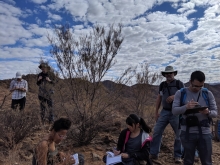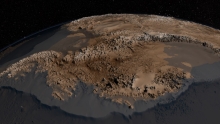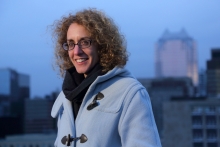Congratulations to Kyle ! Recipient of 1 of 2 Hugh C. Morris Experiential Learning Fellowship. Administered by the Kimberley Foundation, the fellowship supports a student-designed self-guided experiential program related to studies in earth sciences, climate change, sustainability, or the social impact, social sciences or design sciences concern with earth, sustainability of environmental issues.

A research team led by McGill University geochemist Peter Douglas has used a new method for measuring the rate at which methane is produced by microbes breaking down thawing permafrost. “There is a lot of concern about methane being released from permafrost, but we don’t know how available carbon that has been frozen for thousands of years is to microbes,” says Douglas, an assistant professor in McGill’s Department of Earth and Planetary Sciences.

A research team led by McGill University geochemist Peter Douglas has used a new method for measuring the rate at which methane is produced by microbes breaking down thawing permafrost. The breakthrough could lead to an improvement in our ability to predict future releases of the potent greenhouse gas as long‑frozen layers of soil begin to thaw.

Start & End Date: May 1, 2020 – April 30, 2021
Hourly Wage: $25.00 per hour + 4% benefits, paid bi-weekly
Hours/Week: 21 hours per week
Deadline to Apply: March 24, 2020

In November this year, around 400 people gathered at the McGill Faculty Club for the Faculty of Science’s annual scholarship reception. The evening’s celebration was an opportunity for donors to the Faculty to meet the students who have benefitted from their generous support.
Confidence-building opportunities
Addressing the guests, Joëlle Begin Miolan, recipient of a McGill Alumni & Friends Undergraduate Research Award, described the opportunity to do research as a defining moment for her self-belief as an undergraduate physics student.

By Anna Hayden
(This blogpost is the second in a series that explores the Earth and Planetary Sciences Learning Community pilot project.)
Hand lens, compass, rock hammer – tools of the trade of a geologist. But what’s in our writing toolkit? Is there a Swiss Army knife for writing? In fact, an Earth and Planetary Sciences Learning Community meeting focused on equipping its members with such a tool, the A.P.O.S. framework.

By Anna Hayden
Our meeting place has a few different names: Frank Dawson Adams 232, The Gill Room, but when we met together, it was home to the Earth and Planetary Sciences Learning Community. As the only student in the room of professors and university staff, would I be taking an exam? It turns out, I would wear many hats as part of the Learning Community, including that of a facilitator…

The ocean floor as we know it is dissolving rapidly as a result of human activity.

As an entrepreneurial geologist, Bob Wares, (BSc’79, DSc’12), became a mining rock star when he discovered one of Canada’s largest gold deposits in the Abitibi region of Quebec. Now, he is bringing that Midas touch to his alma mater in the form of a landmark $5-million gift that will support research programs, fellowships, innovative research, a lecture series and outreach efforts in McGill University’s Faculty of Science, with a particular focus on his home department, Earth and Planetary Sciences (EPS).

The world’s oldest algae fossils are a billion years old, according to a new analysis by earth scientists at McGill University. Based on this finding, the researchers also estimate that the basis for photosynthesis in today’s plants was set in place 1.25 billion years ago.
More than 90% of Earth’s continental crust is made up of silica-rich minerals, such as feldspar and quartz. But where did this silica-enriched material come from? And could it provide a clue in the search for life on other planets?

Gravitational effects, variations in Earth structure could damp rise in global sea levels

$1 million donation from Trottier Family Foundation to fund McGill Space Institute fellowships
